![]()
![]()
![]()
Use LEFT and RIGHT arrow keys to navigate between flashcards;
Use UP and DOWN arrow keys to flip the card;
H to show hint;
A reads text to speech;
15 Cards in this Set
- Front
- Back
|
753 B.C.E. to 410 C.E. |
2-4. The art of Ancient Rome is grounded in civic ideals and polytheism. Etruscan and Roman artists and architects accumulated and creatively adapted Greek objects and forms to create buildings and artworks that appealed to their tastes for eclecticism and historicism. 2-5. Contextual information for ancient Roman art can be derived from contemporary literary, political, legal, and economic records as well as from archaeological excavations conducted from the mid-18th century on. |
|
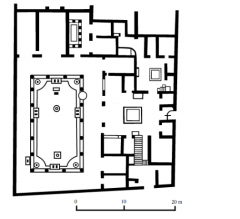
|
39. House of the Vettii. (Plan) Pompeii, Italy. Imperial Roman. c. second century B.C.E.; Rebuilt c. 62–79 C.E. Cut stone and fresco. |
|

|
39. House of the Vettii. (Atrium) Pompeii, Italy. Imperial Roman. c. second century B.C.E.; Rebuilt c. 62–79 C.E. Cut stone and fresco. |
|
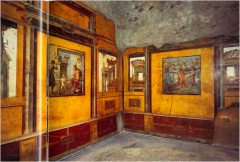
|
39. House of the Vettii. (Frescoes) Pompeii, Italy. Imperial Roman. c. second century B.C.E.; Rebuilt c. 62–79 C.E. Cut stone and fresco. |
|
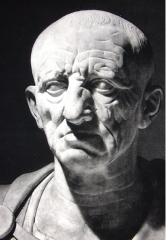
|
42. Head of a Roman patrician. Republican Roman. c. 75–50 B.C.E. Marble, approximately 1’ 2” high. |
|

|
43. Augustus of Prima Porta. Imperial Roman. Early first century C.E. Marble, approximately 6’ 8” high. |
|
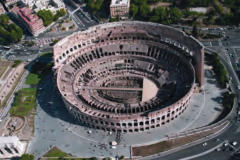
|
44. Colosseum (Flavian Amphitheater). Rome, Italy. Imperial Roman. 70–80 C.E. Stone and concrete. |
|

|
44. Colosseum (Flavian Amphitheater). Rome, Italy. Imperial Roman. 70–80 C.E. Stone and concrete. |
|
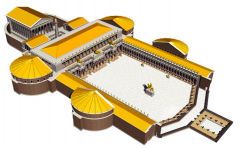
|
45. Forum of Trajan. Rome, Italy. Apollodorus of Damascus. Forum and markets: 106–112 C.E.; column completed 113 C.E. Brick and concrete (architecture). |
|
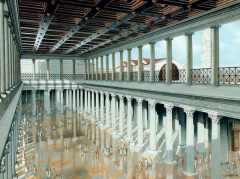
|
45. Forum of Trajan. (Basilica Ulpia) Rome, Italy. Apollodorus of Damascus. Forum and markets: 106–112 C.E.; column completed 113 C.E. Brick and concrete (architecture). |
|

|
45. Forum of Trajan. (Trajan Markets) Rome, Italy. Apollodorus of Damascus. Forum and markets: 106–112 C.E. Brick and concrete (architecture). |
|

|
45. Forum of Trajan. (Column of Trajan) Rome, Italy. Apollodorus of Damascus. Column completed 113 C.E. Marble (column). |
|

|
46. Pantheon. Imperial Roman. 118–125 C.E. Concrete with stone facing. |
|
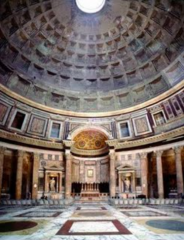
|
46. Pantheon. Imperial Roman. 118–125 C.E. Concrete with stone facing. |
|

|
47. Ludovisi Battle Sarcophagus. Late Imperial Roman. c. 250 C.E. Marble. |

